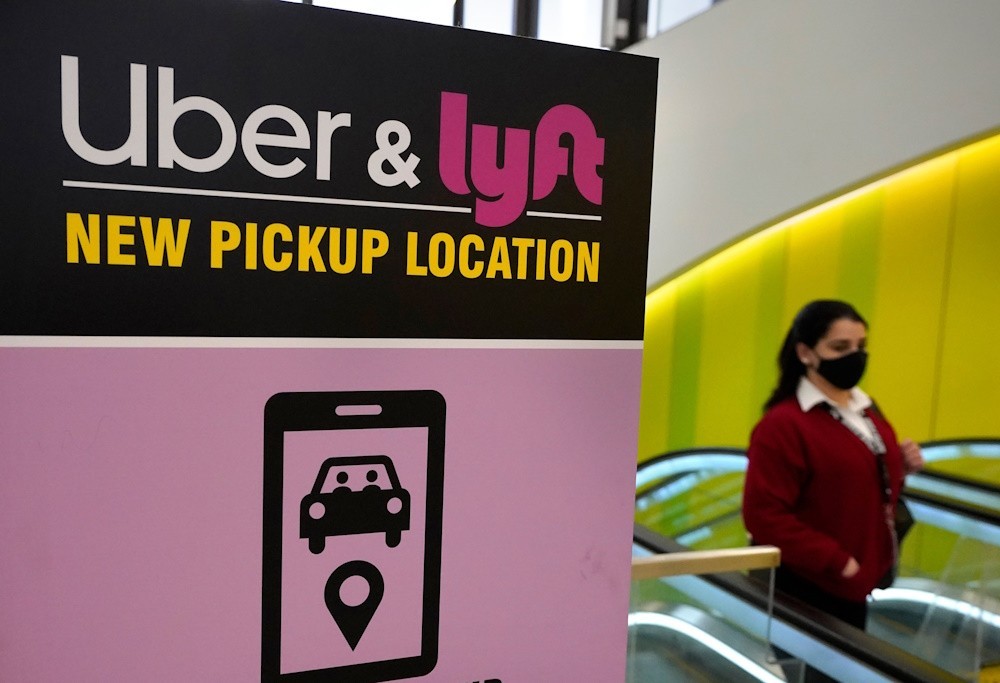How Uber and Lyft are preparing for the Robotaxi

Uber Technologies and Lyft abandoned ambitious initiatives to create their own autonomous taxi services several years ago. Currently, they are restructuring their enterprises to adapt to rivals who may have gained an advantage. The leading companies in ride-hailing are poised to introduce autonomous taxis to consumers, equipped with innovative app functionalities that enable users to access trunks and activate horns via their smartphones. Infrastructure is being developed to support the operation of high-tech taxis, alongside the training of human personnel to assist passengers in the absence of drivers.
This year, both companies are set to integrate driverless vehicles, including those from Alphabet’s Waymo, into their applications. In the near future, users in Austin, Texas, and Atlanta will have the capability to summon a Waymo vehicle via the Uber application. Lyft intends to introduce May Mobility’s autonomous taxis in Atlanta. Uber and Lyft have reached an agreement to sustain their fleets of autonomous vehicles. Efforts are underway to identify suitable sites for vehicle storage, outfitting these locations with charging stations and high-speed internet access, while simultaneously preparing personnel to service the cameras, lidar, and various technologies essential for autonomous vehicles.
“This level of detail takes years to establish,” remarked Andrew Macdonald, Uber’s senior vice president of mobility. “It is not an endeavor that can be accomplished with the mere flick of a switch.” The ride-hailing behemoths are responding to increasing indications that autonomous technology might soon be poised for expansion beyond a limited number of trial markets. Waymo, having launched its own application for public use in San Francisco last year, is now posing a significant challenge to the dominance of Uber and Lyft in various segments of the city, as reported by market-research firm YipitData. The rapid integration of autonomous vehicles has raised concerns among gig economy drivers.
Uber and Lyft previously allocated substantial financial resources towards the development of their own autonomous vehicles. Travis Kalanick, a co-founder of Uber, once asserted that the company must spearhead the transition to autonomous technology or face the peril of obsolescence. Amid the pandemic, both companies abandoned the expensive pursuit, divesting their self-driving divisions. Currently, they are vying to become the platforms that will facilitate the operation of robotaxi technology developed by external entities.
Uber made substantial investments in self-driving technology; however, it divested this unit amid the pandemic. In the last five months, Uber has unveiled over five partnerships for robotaxi services across various U.S. cities, including Los Angeles and Dallas. Uber has entered into an agreement with Waymo, enabling users in Austin and Atlanta to request the company’s autonomous taxis exclusively via the Uber app. This strategic maneuver aims to thwart the driverless car manufacturer from gaining market presence in these urban areas. Waymo will persist in managing its own application in various urban centers. Uber and Lyft are poised to benefit from a share of the revenue generated by driverless taxi bookings. The robotaxi firms gain entry to the vast customer bases of ride-sharing behemoths, circumventing the need for costly advertising or the development of sophisticated technology required to effectively link vehicles with riders.
Self-driving taxis have yet to demonstrate their potential as a sustainable business model. However, the leaders in ride-hailing are wagering that robotaxi firms will opt to align with well-established, popular platforms to minimize vehicle downtime. Human-operated taxis are unlikely to disappear in the near future. The future is poised to feature an amalgamation of traditional taxis and autonomous vehicles. Dara Khosrowshahi, the Chief Executive of Uber, has indicated that it could take as long as ten years for self-driving cars to account for half of the company’s trips in the United States.
Robert Mollins, an analyst at Gordon Haskett Research Advisors, noted that even in such scenarios, the technology may face challenges in densely populated urban centers such as New York or in certain weather conditions. “There is no suggestion to dispatch any of these vehicles to Boston during the winter months,” he remarked. “What occurs when these sensors become obscured by snow?”
General Motors has recently ceased its efforts in the development of Cruise self-driving vehicles. Tesla intends to commence production of its Cybercab prior to 2027. Amazon.com is conducting trials of its Zoox autonomou s vehicles. Nonetheless, consumers appear to be increasingly receptive to the technology. In August, Waymos recorded nearly 500,000 passengers in California, a significant increase from under 20,000 the previous year.
Analysis of consumer receipts by YipitData within Waymo’s operational territory in San Francisco revealed that the company captured a 22% market share in November. In the same month, Lyft’s market share in the region declined to 22%, down from 34% in August 2023. Uber’s market share in the region declined by 10 percentage points, settling at 55% during the same timeframe. Uber and Lyft have asserted that they have not experienced a decline in riders to Waymo, with their bookings in the city continuing to show growth.
David Risher, the CEO of Lyft, asserted that the advent of self-driving cars has broadened the ride-hailing market by providing individuals with additional incentives to utilize these services. He noted that visitors in San Francisco are opting for driverless taxis, attracted by their novelty and the fact that Waymo employs high-end Jaguars—a luxury that is unlikely to persist as automated vehicle technology becomes integrated into more affordable models. “The AV experience of tomorrow will present a marked departure,” he stated during the earnings call.
Daniel Garcia was part of a select cohort of San Franciscans who participated in the complimentary testing of Waymo’s services starting in 2023. He appreciated the ability to bypass trivial conversation with another individual while managing the ambiance and auditory experience. He ceased utilizing Uber and Lyft. Following Waymo’s decision to implement charges and open access to all users via the app, there has been a noticeable increase in wait times alongside a rise in fares. “It truly was an aspiration until it became more challenging to attain,” Garcia remarked. He has resumed utilizing Uber and Lyft, albeit less frequently than before, as he is inclined to wait for a Waymo when time permits.
Uber remains reticent regarding the specifics of its investment in driverless-taxi infrastructure. According to analyst Mollins, the figure remains modest. “Currently, their primary focus is on acquiring knowledge—everything operates under a framework of experimentation and learning.” Uber has introduced a new functionality within its application that enables users to remotely activate the horn of a driverless taxi, thereby facilitating the process of locating their vehicle. The search is underway for sites designated for autonomous vehicle depots, which will facilitate the storage and maintenance of vehicles in proximity to rider traffic.
The firm is collaborating with its current fleet partners—those managing the premium Uber Black service—to convert their facilities into centers for autonomous vehicles. This entails the installation of numerous electric charging stations and an enhancement of internet speeds to tenfold that of a conventional office, thereby accommodating the substantial data requirements of autonomous taxis. Lyft is reconfiguring its Flexdrive car-rental sites into hubs for autonomous taxis while enhancing its application with additional functionalities. Passengers will have the capability to regulate the interior temperature of an autonomous vehicle via their mobile devices.
The firm has developed an artificial intelligence system within its application to address riders’ fundamental inquiries regarding vehicle unlocking and ride initiation. According to Jeremy Bird, an executive vice president at Lyft, the teaching staff is being instructed to tackle some of the more complex challenges, such as assisting customers in retrieving lost items from driverless vehicles. The firm is developing technology that enables individuals to list their personal autonomous vehicles on its platform. “One can possess a fleet of 10 autonomous vehicles, which can be integrated into our platform for management,” Bird stated.
Certain human drivers are experiencing a sense of marginalization. Ghulam Sakhi, a Lyft driver in the San Francisco Bay Area, remarked on the increasing difficulty of earning a living following the reduction of bonuses by companies a few years prior. Subsequently, in the previous year, the pursuit of lucrative travel opportunities proved to be increasingly challenging. As competition from Waymo exerts pressure on fares in popular tourist destinations and urban centers, Sakhi is providing transportation for passengers to and from the airport, a location where autonomous taxis are prohibited from operating.










